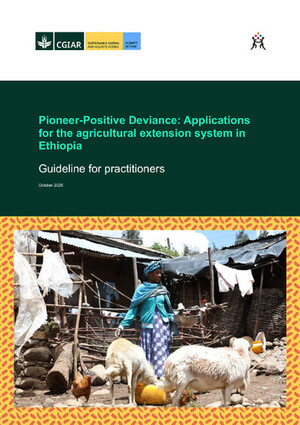
Evaluation of n-alkanes, long-chain alcohols, and carbon stable isotope enrichments of n-alkanes as diet composition markers in free-grazing animals
Abstract
Context Plant species exhibit different patterns of plant cuticular wax profiles, which can potentially be used as diet composition markers in free-grazing herbivores. Aims Evaluate the suitability of the plant cuticular n-alkanes, long-chain alcohol (LCOH) profiles and carbon stable isotope enrichment (δ13C) of n-alkanes as markers in the estimation of diet composition of grazing animals. Methods Forage samples were collected from 100 representative quadrats of 0.5 m × 0.5 m at 10 m transects and sorted by species and pooled from different quadrats to obtain enough quantities of representative individual species. In total, 10 dominant forage species were identified and analysed for n-alkanes and LCOH by gas chromatography, and the isotopic ratio by using gas chromatography–combustion–isotope ratio mass spectrometry. Principal component analysis (PCA) was used to identify inter-species differences in the concentration patterns of plant wax components. Key results Odd-chain n-alkanes comprised the highest proportion of the total n-alkane concentration, ranging from 79% in Ischaemum afrum to 95% in Haplocarpha hastata. n-Alkanes C31, C29 and C33 were the most abundant with an average of 167, 80 and 61 mg/kg DM, in that order, in all species. Even-chain LCOH comprised the highest proportion of the total LCOH concentration, accounting for 92% in Brachiaria scalaris to 97% in Ischaemum afrum. The dominant even-chain LCOH were C30OH, C32OH, C28OH and C26OH, with an average concentration of 362, 348, 266 and 237 mg/kg DM respectively, across species. The δ13C of n-alkanes showed large variations among forage species, ranging from −19.7‰ in Andropogon amethystinus to −40.6‰ in Trifolium mattirolianum. The result of the PCA showed that 81% of the variance in the pattern of concentrations of n-alkanes was explained by the first two principal components compared with 69.3% and 82.9% in the case of LCOH and δ13C of n-alkanes, respectively. Conclusions Noticeable variations were observed for forage species studied in the patterns of plant wax components. Implications The differences in the patterns of concentrations of n-alkanes, LCOH and δ13C of n-alkanes could be suitable as markers for diet composition estimation of grazing animals.
Citation
Wegi, T., Hassen, A., Bezabih, M., Nurfeta, A., Yigrem, S. and Tolera, A. 2022. Evaluation of n-alkanes, long-chain alcohols, and carbon stable isotope enrichments of n-alkanes as diet composition markers in free-grazing animals. Animal Production Science










